I've enjoyed discussing and speculating about what alien life might be like and how likely it is to exist. For me, this is closely tied to speculations about how life developed on the earth and how to correctly interpret evolution. It is an error to assume that evolution has a goal (Man, for example), and I believe it is risky to assume we are typical in any way.
Habitable PlanetsAre earth-like planets rare? We believe other solar systems will have rocky inner planets and gas giants further out. From the discoveries of the Voyager mission, we know that moons of gas giants can be heated by tidal friction, but I assume that life is most likely to evolve on a rocky inner planet with an atmosphere and enough light for practical photosynthesis.
Rocky inner planets can be cold and dead like Mars; too far from the sun for warmth, too small to retain its atmosphere. Or they can be hellish furnaces of pressurized carbon dioxide like Venus. If we could simulate atmospheric thermodynamics accurately, we could compute a diagram of planetary conditions, with solar warmth on one axis and atmospheric pressure on the other. What is the region of habitability that diagram? The size of that region is on factor in the probability of finding habitable planets in other solar systems. The earth is not only a good distance from the sun, it also has an unusually thin atmosphere. This is thought to be the result of a massive collision event, which formed the Moon and blasted away volatile gasses. Had this unusual event not occured, the earth's atmosphere might be 20 to 100 times denser. Would that place earth outside the habitable zone, perhaps causing it to become extremely hot like Venus? Our own existance demonstrates that the earth has the right conditions to be habitable. But our existance implies nothing about the probability of habitable conditions. We could be here because we are fantastically lucky, and habitable planets are rare. Or we could be here because we are typical, and earth-like planets are commonplace. In other words, with a sample size of one, estimated variance is infinite. The only way we can actually make judgements about the probability of key historical events and conditions is to understand or simulate them, or to estimate probabilities from multiple independent examples. Assuming probabilities from our existence is an error that both creationsists and some biologists make. Creationists assume that key biological events are so rare that our existance must be supernatural. Some assume these events are common, "a cosmic imperative" as one biologist recently said, and therefore life is abundant in the universe. The discussion of exobiology is heavily littered with emotional bias and invalid assumptions. It goes without saying, the probabilities of key evolutionary events are entirely independent of what we might wish them to be! Alternative BiochemistriesComplex, stable molecules can only be formed around a few elements that form strong, multiple covalent bonds. Carbon is a known winner, but are there other elements that could form the basis of an alternative biochemistry? Plants and animals exchange oxygen and carbon dioxide, but are there radically different types of metabolisms and ecological cycles of chemical exchange?
Boron has a complex, quirky chemistry, but there are two problems. First, boron is rare. Nuclear synthesis within stars mostly skips over lithium, beryllium and boron. The second possible problem with boron is that its oxide is a solid. Life on earth depends on the cycle of carbon dioxide gas transported in the atmosphere. Boron oxide (or boric acid) is water soluble, so this does not rule out an aquatic biochemistry. But I think the rarity of the element makes Boron Life unlikely. Silicon life has been proposed in science fiction stories. Silicon is extremely abundant, but Silicon Dioxide is not only a solid (quartz!) it is insoluble, and it is very difficult to muster the chemical energy required to crack the silicon-oxygen bond. Silicon life would have to eat rocks and shit bricks, so to speak. Complex silicon molecules, containing hydrogen, are also less stable than corresponding carbon compounds and tend to be broken down by water or oxygen. Perhaps the simplest problem is just that silicates and quartz are too stable and inert to participlate in biochemistry. The respiration of oxygen is important on Earth, but we know that early life was anaerobic. Anaerobic metabolisms probably cannot provide enough energy for large active animals, but are there alternatives for animals to breathing oxygen? Could the atmosphere supply the fuel or "food" for animals, instead of the oxidizing agent? Hydrogen or methane breathing animals have also been proposed in science fiction stories. An atmosphere cannot contain both an oxidizer and a fuel at the same time, or it would be explosive. So the problem with using a reducing atmosphere as food is that some source of stable solid oxidizer must be ingested. There aren't really many candidates for such substances. Nearly all interesting and useful carbon compounds are reducing, such as protein and cellulose. Thus, the organisms themselves could not be a source of edible oxygen, unless they contained a reservoir of nitrates or peroxides. One can invent complicated scenarios, but nature seems to eschew such designs when there are simpler, more efficient alternatives. Of course, it is strongly believed that life originated in a primaeval reducing atmosphere, and ultimately photosynthesis developed. If that atmosphere was extremely rich in hydrogen (H2, Methane, Ammonia), it is possible that pure oxygen would not be the excess byproduct of photosynthesis. Many scientists believe now that the primaeval atmosphere of rocky inner planets was not this hydrogen rich, and may have been more like the nitrogen/carbon-dioxide atmospheres of Mars and Venus. If the atmosphere of a world remains reducing, aerobic metabolisms and energetically active animals would not have evolved. Who knows where plant-like life might evolve without competition from animals? Without the energy of aerobic metabolisms, alien plants might still develop slow-moving but highly complex behavior, the imperative being the competition for access to light. Could animals breath chlorine instead of oxygen? Imagine a planet with a beautiful green atmosphere! We think of Chlorine as being poisonous, but in many ways oxygen is equally caustic stuff. This might be feasible, but oxygen is much more abundant, and while oxygen, with its covalent double bond, is an essential part of carbon biochemistry, chlorine is apparently not. Plants produce excess oxygen because they must crack water (or carbon dioxide) to make essential hydrogen-carbon-nitrogen-oxygen compounds. It would be energetically expensive and unnecessary for plants to crack salts to get alkali metals and exhaust chlorine, unless there was a bizarre ionic/electrical metabolism at work. Evidence from laboratory simulations and from spectral analysis of interstellar clouds suggests that amino acids, nucleotides and simple sugars are common substances. Stanley Miller's famous experiment showed that random chemical reactions quickly resulted in the formation of amino acids and other important organic chemicals. Apparently these compounds form readily, and some of them are subsequently able to polymerize to form proteins, cellulose-like polysaccharides or RNA. RNA is thought to be the basis of an early form of life, since it is able to act as a primative replacement for protein enzymes. My conclusion is that animal life is likely to be carbon based and oxygen breathing. In fact, I think it is likely to be RNA and protein-based, but not using the same nucleotides and 20 amino acids found on earth. Countless varitions in basic biochemisty seem possible. Alien life might use RNA but not DNA. Perhaps thioesters are used in place of ATP, etc, etc. The structural support of larger organisms might be protein fiber, or polysaccharide fiber, perhaps with hard-mineral reinforcement. If laevorotatory isomers happen to be used, the biosphere might be extremely toxic to visitors from earth. Evolution and MorphogenesisLittle is known about pre-biotic chemistry or the early formation of life in the Archean Era. In the absence of extraterrestial examples, experiments with chemical and computer simulation may hold the key to understanding the origin of life, and give us meaningful estimates for the probability of life forming. It is currently conjectured that RNA was the basis of early biochemistry, with a later evolution of complex protein and DNA based life.About 3.5 billion years ago, the first prokaryotic cells appear, simple bags of protoplasm, containing a floating strand of DNA. These archean cells probably fed on nutrients in the ocean, anerobically fermenting chemicals that were produced randomly by sunlight and geothermal activity. In this sense, life was driven by solar energy, but not very efficiently. They may have fed on each other as well, but that alone could not sustain a steady-state ecosystem.
Fermenting photochemical goo was not very effective. About 2.5 billion years ago, photosynthesis evolved and solar energy could be more efficiently utilized. The atmosphere began to fill with oxygen. The oldest known fossils are stromatolites, primitive colonies of photosynthesizing cyanobacteria. This was a key event of unknown probability, which allowed solar energy to vigorously drive the ecosystem. The rise of poisonous atmospheric oxygen was a fatal catastrophy for most life forms, but some evolved aerobic metabolisms that allowed them to generate chemical energy by eating and oxydizing food. About 1.5 billion years ago, Eukaryotic cells appeared, with nuclei and organelles. It is believed these were a symbiotic merger of different prokaryotic cells. For example, mitochondria have their own DNA and reproduce independently like bacteria. Eukaryotic cells contained fibers of actin and myosin protein which could contract and move the cells. This mechanism was an important precursor to muscles in later animals. Computer simulation of genetic algorithms indicate that random mutation by itself is a very ineffecive means of reaching a goal by natural selection. However, when cross breeding is introduced, algorithms can reach goals with surprising speed. Prokaryotic cells may have exchanged genetic material via plasmids, but efficient sexual reproduction was an innovation of the Eukaryotic cell. While life appeared quickly, complex creatures did not evolve rapidly. 3 billion years passed, with only the most primitive soft-bodied animals--sponges, tubes, cups, fans, known collectively as Ediacara. Morphogenesis seems to follow a few general grammers of shape: the sequential repetition of body segements, like a worm; the recursive branching of structures like in a tree or animals' legs which are distorted copies of the body tube; and the specialization or fusion of elements, like the specialized head segment or the morphing of legs into antennae. The evolution of animals seemed to take a sudden leap over 500 million years ago, in the Cambrian Explosion. In a remarkably short time, the primative Ediacara were replaced with animals having all the basic physiology of modern ones: eyes, nervous systems, muscles, digestive systems, hearts, gills, legs, claws, etc. The competion for ecological niches caused a bewildering variety of animal designs. Was there a difficult, key break-through in evolution that allowed this explosion? These milestones in the development of metabolisms and physiology may be rare events, key evolutionary break-throughs whose probabilities are likely to be Poisson distributed. Thus the time intervals between these key events are exponentially distributed. If the 3 billion year length of the Precambrian is the mean value of an exponential distribution, then it is would not be at all unusual for the same process to take 1 billion or 10 billion years somewhere else, under similar conditions. However, we have only one instance of a Cambrian Explosion, and from its existence, we can deduce nothing about the average time intervals between key events. It could be typical, it could be unique in the universe. We must learn more about the mechanisms of these developements before we can judge. I am repeating this notion, a kind of biological anthropic principle. We exist because the right things happened, but without knowing more, we cannot say if those things were likely or not. Would alien life evolve more rapidly, more slowly, along the same lines? A few events seem essential, photosynthesis, actin and myosin, the physiological formation of moving, eating animals. Are all of these events inevitable? The Three Animal Ecosystems of EarthIt is hard to imagine alien contingencies for evolution of complex life forms. Consider some of the early divergences on earth: the plant kingdom and the animal kingdom. Do these represent just two of many wildly different strageties for life? Or are vascular plants a fairly inevitable course for low-energy photosynthesizing life, and are animals the logical way for aerobic, preditory life to develop? Unfortunately, the earth apparently provides only one contingency of early development to study.
On earth, there have been three ecosystems of complex animals, following the Cambrian Explosion. They are separated by catastrophic extinction events--the "K-T event" that killed the dinosaurs, and the even more deadly "Late Permian Event" that killed the trilobites. This gives us the chance to see some aspects of the later development of life rewound and played over again three times. This is a way to estimate probabilities of some evolutionary events by seeing the outcome of multiple trials. It is tempting to think of the Paleozoic era as much more primitive than our own, but by the Silurian period most modern animal physiology existed: brains and spinal cords, eyes with lenses, jaws with teeth, arms with claws, wings for flight. Some of these features have evolved over and over again in independent cases, so for example, we can be almost certain that advanced alien life would have eyes and jaws. In many ways, it is remarkable that so little innovation in gross animal anatomy has happened since then. Does that indicate that there are no other radically different successful strategies, or it is just too difficult for evolution to jump off a continuous track of small changes? Stepping back and looking at animal morphology, we see quite a variety of successful designs that we might call "advanced": The octopus with eyes and tentacles, arthropods with manipulating claws. And of course, vertebrates seem to dominate the other forms both on land and in the sea. What animal designs might be dominant on other worlds? In the oceans, the same form of dominant top preditor has evolved over and over again: the Tuna, the Dolphin, the Ichthyosaur--streamlined, fast-moving animals with jaws and teeth. Multiple trials resulting in the same design is meaningful information. But although we know a dolphin-like creature is likely, don't forget the octopus with its dexterous tentacles. On land, there has been a greater variety of dominating life forms. During the Paleozoic, arthropods ruled the land and still might if amphibians had not developed. During the Mesozoic era, intelligent fast-running bipedal dinosaurs might be called the most advance land animal (e.g., Deinonychus). At the beginning of the Cenozoic era, giant killer birds were the top predators. Later, birds were replaced by quadruped mammalian predators. Today, we would say Man is the top animal. Could a flying creature become dominant? A hive-like colony of small cooperating creatures? There is too much variety to extrapolate what alien land animals might look like, even if they were highly intelligent. Many people have assumed that Man is the obvious end result of evolution, but objectively, we are a very oddly shaped animal unlike almost any other that has developed. If we encounter complex alien animals, expect to be surprised! IntelligenceIt is often naively assumed that high intelligence is the inevitable goal of evolution, that Man represents the final success after billions of years or trial and error. This has also led to an assumption that any other world on which life develops will evolve an intelligence similar to our own.
But why did human intelligence only form after almost 600 million years of complex animal life? By the mid Paleozoic era, all the physiological elements needed to make a modern animal were in existence. But the Paleozoic ecosystem lasted for over 300 million years without a highly intelligent species, as far as we know. The most intelligent animal of that era was probably a cephalopod, like the octopus. These predatory mollusks have eyes with lenses and the intelligence of small mammals or birds, which is interesting considering how independent their evolution is from vertebrates. The Mesozoic era lasted 200 million years, and it too failed to yield intelligence like our own. Or at least, no evidence has yet been found for a saurian civilization. Two legged theropods hunting in packs may have achieved intelligence on the order of lions or wolves. That seems to be sufficient for that purpose. Only in the last few million years has Man developed, an hyper-intelligent animal with language. Perhaps something as smart as us would have eventually developed in the other eras if they had not been so rudely interrupted by large meteors. In the Cenozoic era, several independant intelligences have evolved. Canines, Dolphins and Apes are intelligent, with the latter two representing a significantly superior intelligence. There is considerable diversity of form, although the temperments of intelligent mammals are surprisingly similar. Looking at the images above, only one obvious physical trait stands out: two eyeballs with lenses. Evolutionary psychologists believe that human (and dolphin) intelligence is the result of social life. Social animals benefit from cooperative behavior, but we don't see all animals in nature take this strategy. A species that cooperates has to solve a very tricky problem or it will not survive: individuals cannot be allowed to cheat. If individuals can take advantage of social behavior without joining in work or fighting off an attacker, they will out-breed their fellows and the species will stop being social. This is called the "free-rider problem", and it is believed that high intelligence evolved to solve this problem in the context of large communities. This seems to be the only scenario for the development of intelligence on our planet. And it is surprising how similar intelligent social animals are on our planet. Wolves and dolphins are enough like us for us to comprehend their behavior, or even to befriend them. If high intelligence is an adaptation to community life, then intelligent aliens might be similar to us psychologically. That is good news and bad news. We might find the hallmarks of sexual politics: leadership hierarchy, jealously, a notion of sexual obscenity. We might find the hallmarks of anti-cheating strategies: notions of honesty, bravery, freedom, friendship. Man and Dolphin seem to represent intelligence in free-thinking individuals, and thus the social structure of these species is complex. An alternative might be a hive community, with no sexual politics or individual freedom. Insects have followed this contingency, perhaps because exoskeletons limit the size and abilities of individuals. But this strategy has not achieved high intelligence. The Silent SkyIn the radiobroadcasting spectrum, the earth is a thousand times brighter than the sun. Any nearby civilizations who use radio like us would be detectable with our best astronomical radio detectors, and in fact there has been an effort in recent years to search for these signals. So...why no radio signals? A few possibilities come to mind.
Intelligence may self-destruct. Our social adaptations evolved to maintain communities of hundreds of people, but does our behavior scale up to planet-sized communities and beyond? The philosopher, Eric Hoffer, suggests that we form two types of large organizations, one productive and one evil, what he called Practical Organizations and Mass Movements. Mass movements have a long history of destroying knowledge, progress, even whole civilizations. We are all well aware that if weapons of mass destruction fall into the hands of a mass movement, that could be the end of our species. Intelligence may get wiped out. Maybe something exterminates any species they detect. Would we do that, if we advanced to an interstellar civilization? The pattern of human history is that only Mass Movements practice wildly destructive violence, and Mass Movements are fairly defective. I don't believe we would achieve an interstellar civilization unless we discovered a way to curb this behavior. That may be true of aliens as well. I think it is silly to assume that aliens will be angelic, benevolent beings, but they may be practical and may have the ability to recognize in us what we see in other intelligent animals. Perhaps we will make nice pets at the very least. Intelligence may not be what we expect. Intelligence may exist, but we may be ridiculously naive if we expect them to be broadcasting "I Love Lucy" episodes into space. Consider the dolphin, a valuable example of independent evolution of high social intelligence. They don't look like us, they don't talk like us, they don't have technology, they don't even have hands! We might blow ourselves up someday, but Dolphins probably cannot even comprehend the idea. Even many human societies have not gone down the road of high technology. Consider how sophisticated the Inca civilization was, even though it did not smelt metals or use wheels. Intelligence may be freakishly rare. Frank Drake proposed a formula for estimating and discussing the question of how many intelligent, communicating civilizations might exist in our galaxy. It simply broke the problem down into factors:
Acknowledgements and ReferencesTheodore Gray kindly allowed me to use his images of boron and carbon, from his remarkable element collection. An excellent interview with Stanley Miller and other links can be found here. |
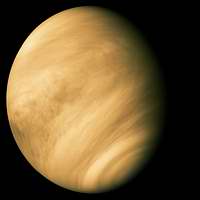 Venus
Venus
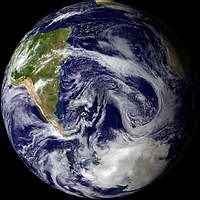 Earth
Earth
 Mars
Mars
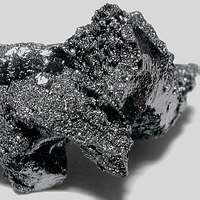 Boron
Boron
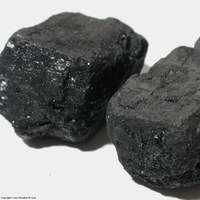 Carbon
Carbon
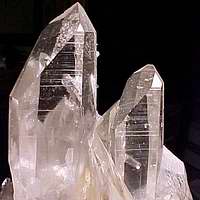 Silicon Dioxide
Silicon Dioxide
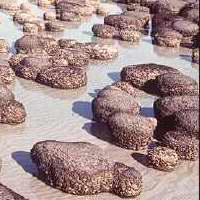 Cyanobacteria
Cyanobacteria
 Eukaryotic Cell Fossil
Eukaryotic Cell Fossil
 Ediacara Biota
Ediacara Biota
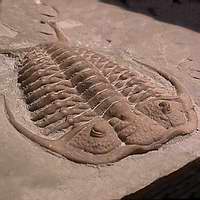 Paleozoic Era
Paleozoic Era
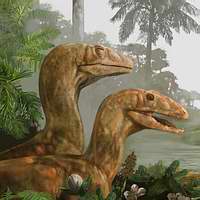 Mesozoic Era
Mesozoic Era
 Cenozoic Era
Cenozoic Era
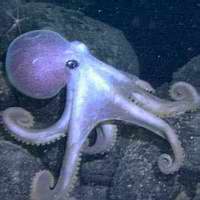 Mollusk Intelligence
Mollusk Intelligence
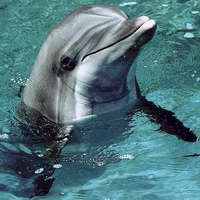 Cetacean Intelligence
Cetacean Intelligence
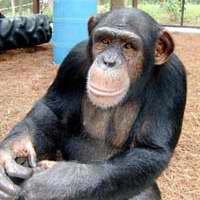 Primate Intelligence
Primate Intelligence
 Mass Movements
Mass Movements
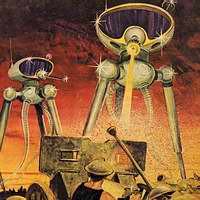 Killer Aliens
Killer Aliens
 Low-Tech Options
Low-Tech Options